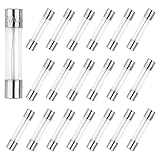All Categories
Hemoglobin Disorders: Molecular Methods and Protocols (Methods in Molecular Medicine)
Share Tweet
*Price and Stocks may change without prior notice
*Packaging of actual item may differ from photo shown
- Electrical items MAY be 110 volts.
- 7 Day Return Policy
- All products are genuine and original








About Hemoglobin Disorders: Molecular Methods And
Product description Hemoglobin and Hemoglobinologists This volume, Hemoglobin Disorders: Molecular Methods and Protocols, will be introduced with a review of the great milestones in the field, and the scientists responsible for those achievements. The history of hemoglobin can be divided into three periods: the Classical period, the Modern period, and the Post-Modern period. I am inclined to include as the four major members of the classical period Francis Roughton, Quentin Gibson, Jeffries Wyman, and Linus Pauling, not only because of their achievements, but also because of the superb scientists they trained and/or influenced. Francis John Worsely Roughton (1899–1972) (Fig. 1), in his laboratory at Trinity College in Cambridge, England, made the first measurements of the rapid reaction of oxygen with hemoglobin at the millisecond scale, at first by flow-mixing methods and later by flash photolysis. He not only opened an era of molecular research of hemoglobin, but also invented the methodology for fast reactions through the use of laser technology, which was later improved by others so that even faster reactions could be detected. Another contribution of Roughton was the education of Quentin H. Gibson (Fig. 2), his favorite s- dent, who, in his laboratory in Sheffield, continued to expand the horizon of ligand binding to hemoglobin, defining the oxygen binding constants for each of the hemes of hemoglobin. Though this did not, as expected, solve the und- lying mechanism of ligand cooperativity as discussed below, it was nonet- less an important milestone. Review "...the book is a very good practical volume for those interested in further clinical and experimental studies of hemoglobin disorders." - Biomedical Chromatography From the Back Cover The recent announcement that sickle-cell anemia and thalassemia have been corrected by the transplantation of stem cells bodes well for the future of gene therapy in hemoglobinopathies. In Hemoglobin Disorders: Molecular Methods and Protocols, Ronald Nagel, MD, has assembled a collection of readily reproducible techniques essential to the continued advance of our molecular understanding of these diseases. The book's richly experienced authors detail methods utilizing a wide variety of the latest analytical techniques, including X-ray crystallography, high performance liquid chromatography, electrophoresis, and nuclear magnetic resonance. Additional methods are offered for prenatal diagnostic analysis, the DNA diagnosis of hemoglobin mutations, hemoglobin fluorescence, and the semisynthesis of hemoglobin. Each protocol includes an introduction explaining the basic science, step-by-step instructions for its successful execution, notes on pitfalls to avoid, and tips on how to employ it effectively with novel systems and conditions. State-of-the-art and highly practical, Hemoglobin Disorders: Molecular Methods and Protocols reviews all the basic topics and techniques in this critically important field, and offers today's most comprehensive set of proven protocols for successful experimental and clinical work on hemoglobin diseases.






















